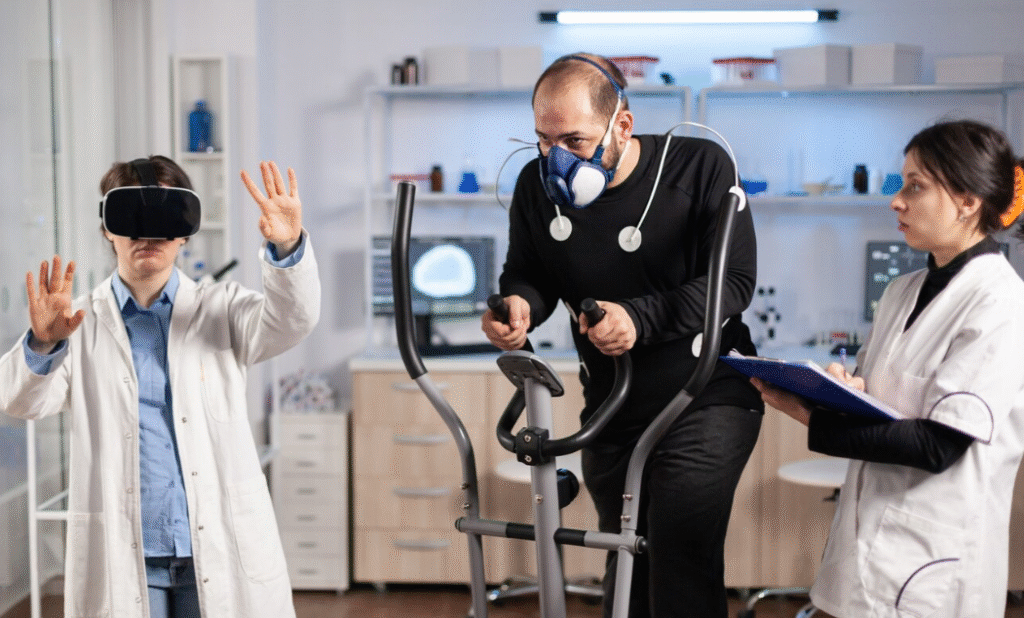Workplace safety has always been a priority for employers and employees alike, but with the increasing complexity of modern work environments, ensuring safety has become more challenging. Enter Artificial Intelligence (AI)—a transformative technology that is reshaping how safety is managed across industries. From real-time hazard detection to predictive maintenance, AI is playing a critical role in reducing workplace accidents, improving compliance, and enhancing overall safety culture.
How AI Contributes to Workplace Safety
AI is being integrated into workplace safety strategies in various ways. Through machine learning, computer vision, natural language processing, and other AI technologies, companies can identify risks, automate safety processes, and predict potential hazards before they lead to accidents.
1. Real-Time Hazard Detection
AI-powered systems are equipped with sensors, cameras, and monitoring devices to detect potential hazards in real-time. For example, computer vision algorithms can identify unsafe conditions such as spills, obstacles, or faulty equipment in environments like factories, warehouses, or construction sites.
These systems can immediately alert workers and supervisors about potential risks, ensuring prompt action is taken before an accident occurs. In industries like construction, where the environment is constantly changing, real-time hazard detection can save lives.
2. Predictive Analytics for Accident Prevention
One of the most powerful applications of AI in workplace safety is predictive analytics. By analyzing historical data, such as accident reports, maintenance records, and environmental conditions, AI can identify patterns and predict when and where an accident is likely to occur.
For example, AI can predict when machinery might fail or when safety protocols may be neglected, enabling proactive interventions like equipment maintenance, worker training, or the installation of safety devices before issues arise.
3. Wearables and IoT Integration
AI-driven wearables and Internet of Things (IoT) devices are becoming increasingly common in industries that require workers to operate in hazardous conditions. Smart helmets, vests, and wristbands can track various health metrics such as heart rate, temperature, and fatigue levels, and even detect dangerous environmental conditions like high levels of toxic gases or extreme temperatures.
AI algorithms analyze the data collected by these devices and can provide real-time feedback to workers or managers, alerting them to potential health risks or unsafe working conditions. In high-risk industries like mining or oil and gas, these wearable technologies have the potential to significantly reduce workplace injuries and fatalities.
4. Automated Safety Inspections
AI is also revolutionizing the way safety inspections are conducted. Traditionally, inspections involve manual checks, which can be time-consuming and prone to human error. AI-powered systems, such as drones or autonomous robots, can conduct inspections in hard-to-reach or dangerous locations, such as high-rise buildings or deep underground facilities.
By automating these tasks, AI not only increases efficiency but also ensures that safety standards are consistently met. Additionally, AI systems can analyze inspection data to identify recurring issues or predict future risks, helping organizations take corrective actions before problems escalate.
5. Training and Simulation
AI is enhancing safety training through immersive simulations and virtual reality (VR). In high-risk industries, workers can engage in realistic VR training scenarios where they are exposed to hazardous situations in a controlled, risk-free environment. AI-driven simulations adapt to the trainee’s behavior and performance, providing personalized feedback and helping workers develop critical safety skills.
This kind of training can be more effective than traditional methods, as it provides hands-on experience with real-world scenarios without exposing workers to actual danger.
Benefits of AI in Workplace Safety
- Proactive Risk Management: AI helps predict and mitigate risks before they materialize, reducing the likelihood of accidents.
- Increased Efficiency: Automation of inspections, monitoring, and hazard detection speeds up safety processes and ensures continuous vigilance.
- Enhanced Decision-Making: AI algorithms provide data-driven insights, helping managers make informed decisions about safety protocols, equipment maintenance, and employee training.
- Cost Reduction: Preventing accidents and injuries through AI can save companies significant costs related to medical expenses, legal liabilities, and lost productivity.
Challenges and Ethical Considerations
While AI offers numerous advantages, its implementation in workplace safety also presents challenges:
- Data Privacy: Collecting and analyzing employee data, such as health metrics and work performance, raises privacy concerns. Employers must ensure that data is collected transparently and used responsibly.
- System Reliability: AI systems, particularly those involving real-time monitoring and hazard detection, must be highly reliable. A failure in the AI system could lead to accidents rather than prevent them.
- Workplace Resistance: Some workers may resist AI integration due to fears of job displacement or mistrust in technology. It’s crucial to foster a culture of collaboration between humans and AI, ensuring that AI is seen as a supportive tool, not a replacement.
Conclusion
AI is poised to be a game-changer in workplace safety, offering innovative solutions to prevent accidents, enhance compliance, and protect workers. Through predictive analytics, real-time hazard detection, wearables, and automation, AI helps create safer, more efficient workplaces. However, it’s essential for businesses to address challenges related to data privacy, system reliability, and workforce integration to fully realize the potential of AI in improving workplace safety.
As AI continues to evolve, it will play an increasingly important role in fostering a culture of safety, ensuring that workers return home safely every day.


